One of the most critical components of a bicycle that directly affects your comfort on long rides is the bicycle saddle. The right saddle can make all the difference between a smooth, enjoyable cycling experience and an uncomfortable, painful one. If you’re spending hours in the saddle, you’ll quickly notice how crucial comfort is. However, with so many options available, how do you find the most comfortable bicycle saddle for your specific needs?
1. Consider Your Riding Style
First and foremost, your saddle choice should align with the type of cycling you do. Different cycling disciplines demand different saddle features:
Road Cycling: For long rides and high-performance cycling, a road saddle is typically narrower with a lightweight design. It supports an aggressive riding position, focusing on aerodynamics and minimal friction.
Mountain Biking (MTB): MTB saddles are generally wider and more padded, offering extra comfort for off-road terrain. These are designed to handle rough trails and provide support when cycling through challenging landscapes.
Commuting or Casual Cycling: If you’re cycling for leisure or commuting, a saddle with more padding and a comfortable design will help you ride longer distances without discomfort.
Understanding your riding style is crucial to picking the right saddle, as each type offers distinct features that cater to your specific needs.
2. Evaluate Saddle Shape and Width
Saddle shape is vital in ensuring proper support. The most important factor here is your sit bones—the bony parts of your pelvis that make contact with the saddle. A saddle that’s too narrow or too wide can create pressure points, leading to discomfort.
Wide Saddles: These are better suited for people with wider sit bones or those riding in a more upright position.
Narrow Saddles: These are ideal for riders with narrower sit bones or those who ride in a more aggressive, forward-leaning position.
When selecting a saddle, try to get an accurate measurement of your sit bones, either by visiting a bike shop or using an online guide to determine the appropriate width. Many high-quality saddles come in various widths to suit different body types.
3. Choose the Right Padding and Material
While cushioning is important, more padding doesn’t always equate to more comfort. Too much padding can lead to chafing and discomfort, especially if you’re cycling for long periods. Instead, look for padding that’s dense but comfortable, and made of materials that allow air circulation to reduce sweat and heat buildup.
Gel Padding: Offers excellent comfort and shock absorption. Ideal for short to medium-distance rides.
Foam Padding: More common in performance-oriented saddles. It’s lightweight and provides sufficient comfort while avoiding the bulk of thicker gel inserts.
Carbon Fiber or Synthetic Materials: High-performance saddles often use carbon fiber or lightweight composites for strength, durability, and minimal weight.
The Trifox Carbon Bike Saddle is a perfect example of this. Combining lightweight carbon with memory foam padding, it offers the right balance of comfort and performance, ensuring a smooth ride over long distances while keeping the overall bike weight low.
4. Test Different Options
When shopping for a saddle, comfort is key. If possible, visit a bike shop that allows you to test ride different saddles. Test them on your bike, ride for a few miles, and pay attention to how your body feels. Some bike shops also have saddle fitting services that can help you select the right saddle based on your anatomy and riding style.
For a quick but effective way to narrow down your options, consider the Trifox Carbon Bike Saddle, which offers an ergonomic design that conforms to your body shape, providing excellent comfort without compromising performance.
5. Look for Durability and Quality
Comfort is crucial, but durability matters just as much. A high-quality saddle will last longer, hold up to daily use, and maintain its shape and comfort over time. Look for saddles that are well-constructed with strong materials like carbon fiber, titanium, or stainless steel rails, as they offer better durability and weight savings.
The Trifox Carbon Bike Saddle is engineered to be both durable and lightweight, featuring a carbon fiber base and high-quality cover materials designed to withstand long hours of cycling without losing shape.
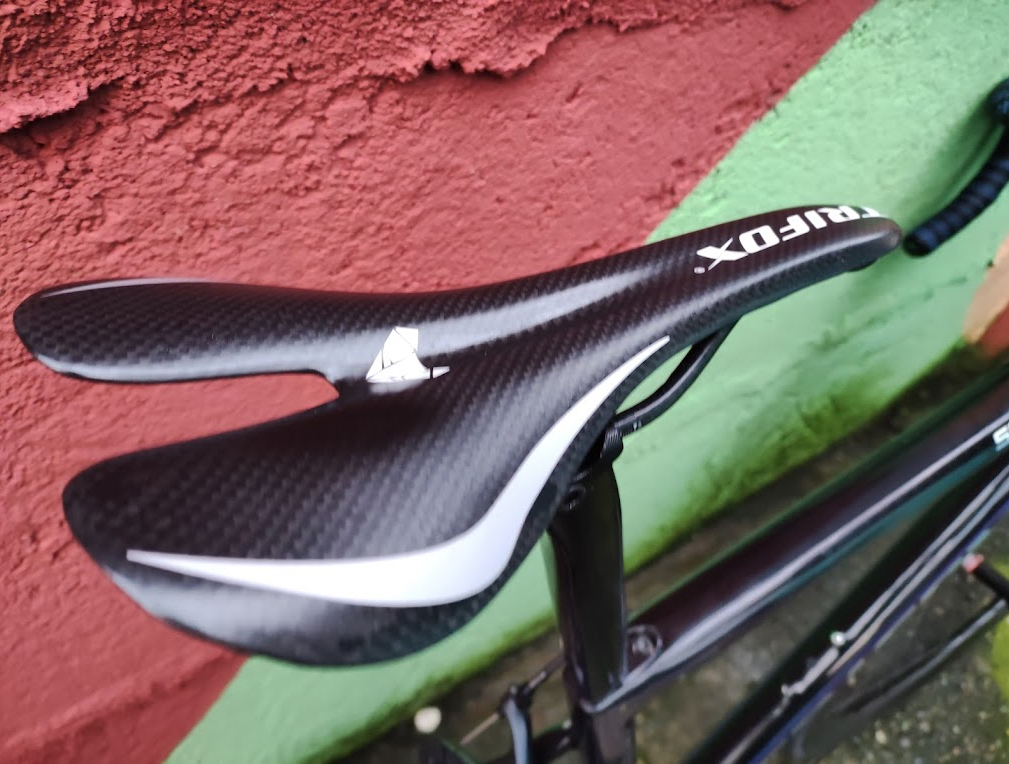
Finding the most comfortable bicycle saddle is essential for improving your ride experience. Consider your riding style, saddle shape, width, padding, and materials when making your choice. Testing different saddles is also a great way to find what works best for you. For riders looking for high-performance comfort, the Trifox Carbon Bike Saddle is a great option, combining lightweight carbon with memory foam for the perfect balance of comfort and durability.
By selecting the right saddle, you'll not only enhance your comfort but also improve your cycling performance, making every ride more enjoyable.
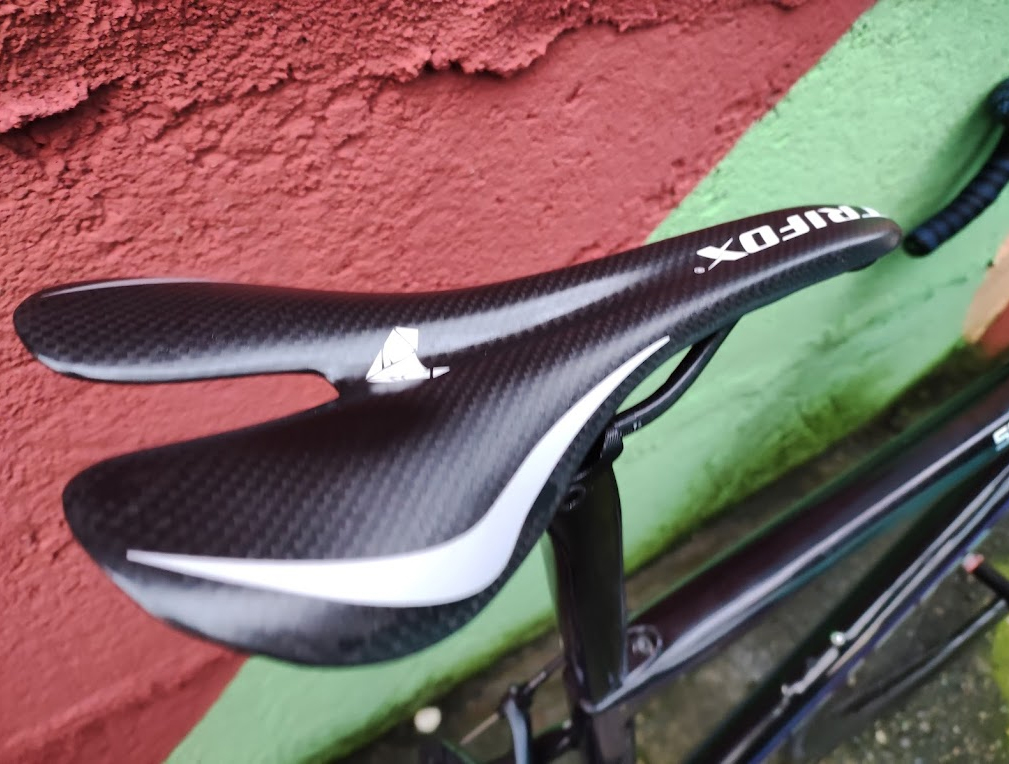
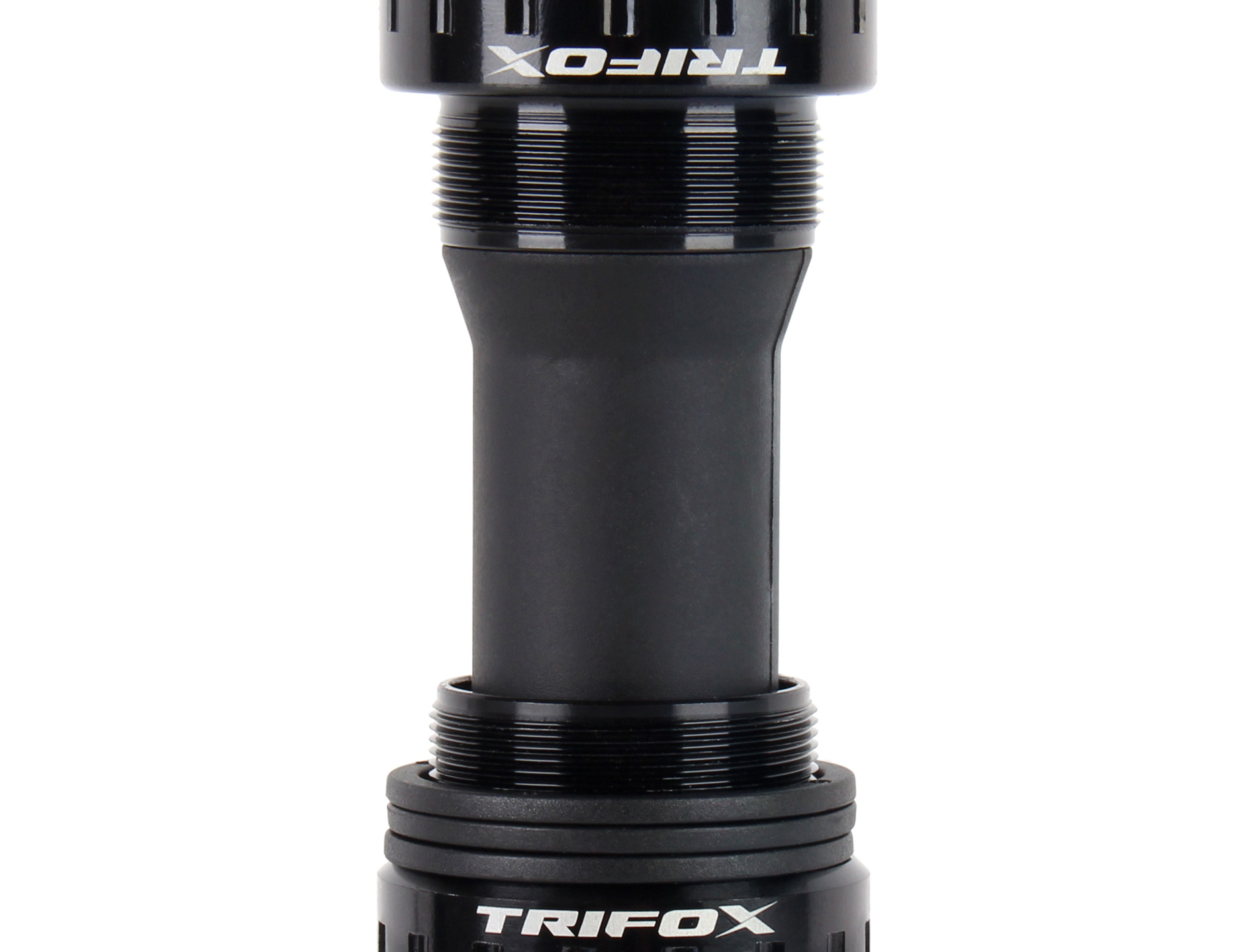
When it comes to bicycles, many cyclists tend to focus on components like wheels, frames, or gear systems, but one crucial part that is often overlooked is the bottom bracket. This small but vital component plays an essential role in your bike's performance, comfort, and overall ride quality. If you're wondering what exactly a bicycle bottom bracket is and how it impacts your ride, you're in the right place.
What is a Bicycle Bottom Bracket?
The bottom bracket is the part that connects your bike's crankset (the pedals and chainrings) to the frame. It's located in the bottom bracket shell, which is part of the frame, and it allows the cranks to rotate smoothly. The bottom bracket consists of a spindle that runs through the frame and connects the left and right crank arms. Bearings are used within the bottom bracket to enable smooth rotation and minimize friction.
Essentially, the bottom bracket serves as the interface between your cranks and your bike frame, allowing you to transfer power from your legs to the wheels. It might be a small and seemingly insignificant component, but without it, pedaling would be difficult and inefficient.
Types of Bottom Brackets:
There are several types of bottom brackets, each designed for specific frame types and rider needs. The two main categories are threaded and press-fit bottom brackets.
-Threaded Bottom Brackets: These are the traditional type and screw directly into threaded holes on the frame. They tend to be easier to install and maintain, making them a popular choice for many road and mountain bikes.
-Press-Fit Bottom Brackets: Instead of threads, press-fit bottom brackets rely on being pressed directly into the frame using a special tool. These are commonly found on modern bikes and are known for being lighter, but they can be more difficult to install and maintain.
The choice between these two types depends largely on the design of your bike frame and the level of performance you're seeking.
How Does the Bottom Bracket Affect Your Ride?
The bottom bracket, although often overlooked, has a significant impact on the performance of your bike. Here's how it affects your ride:
1. Pedaling Efficiency: A well-maintained bottom bracket allows for smooth and efficient power transfer from your legs to the cranks. If the bearings inside the bottom bracket are of high quality, the cranks will rotate smoothly with minimal friction, making pedaling feel effortless. Poorly maintained or low-quality bottom brackets can result in rough pedaling, which wastes energy and can make the bike feel sluggish.
2. Crankset Alignment and Ride Comfort: The bottom bracket also affects the alignment of your crankset. If the bottom bracket is incorrectly installed or of poor quality, it can cause misalignment, which leads to discomfort, poor pedal stroke mechanics, and potential injuries over time. Ensuring that your bottom bracket is installed correctly and is in good condition is key to achieving optimal crank arm alignment.
3. Weight Considerations: As with most bike components, weight is a crucial factor. Carbon fiber and high-grade aluminum bottom brackets tend to be lighter than their steel counterparts, which is an important consideration for competitive cyclists. A lighter bottom bracket can help shave a few grams off the overall weight of your bike, contributing to a more responsive and agile ride.
4. Durability and Maintenance: The bottom bracket’s durability directly impacts how often it needs maintenance. High-quality bottom brackets are designed to last longer and require less frequent servicing. However, bottom brackets that are exposed to the elements or suffer from neglect can wear down quickly, leading to poor performance and the need for replacement.
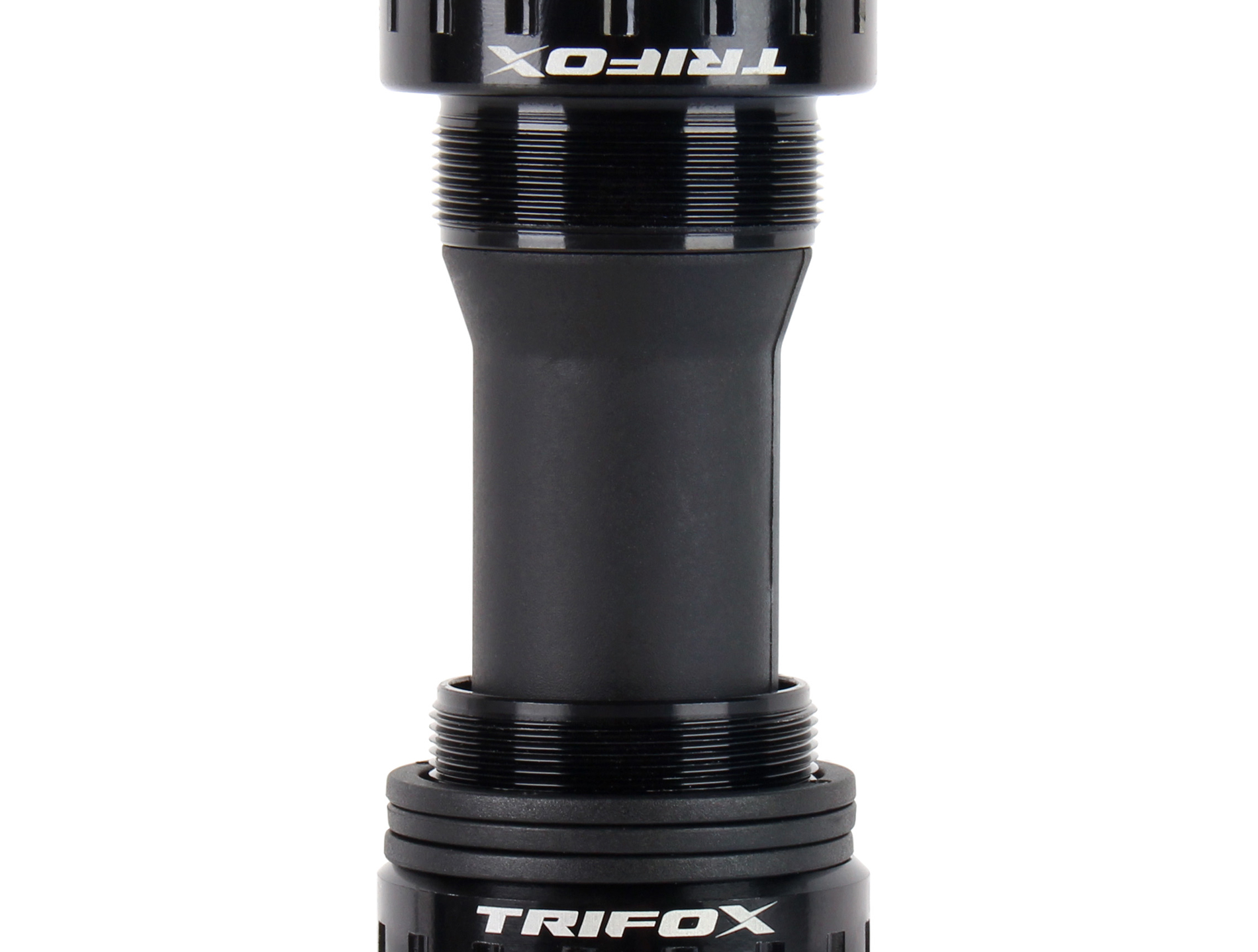
In short, the bottom bracket is a small but crucial component of your bike. It affects everything from pedaling efficiency and ride comfort to crankset alignment and bike weight. By understanding its function and ensuring it’s properly maintained, you can improve your ride quality and performance, making your cycling experience more enjoyable and efficient. If you’re unsure about the condition of your bottom bracket, consider having it checked by a professional mechanic to avoid unnecessary issues on your rides.

When it comes to cycling, comfort is key. Whether you’re a commuter, a weekend warrior, or a competitive rider, the quality of your ride often depends on the gear you’re using. Among the many upgrades available to cyclists, shock absorption handlebars have gained popularity for their ability to enhance the overall riding experience. These handlebars are designed to reduce the impact of road vibrations and bumps, providing a smoother and more comfortable ride. In this blog post, we’ll explore how shock absorption handlebars, like the integrated carbon drop handlebar with stem DHB500 from Trifox, can improve your cycling experience.
1. Reduced Fatigue from Vibration
One of the most noticeable benefits of shock absorption handlebars is their ability to reduce the amount of vibration transmitted from the road to your hands, arms, and shoulders. Traditional handlebars, especially on rigid frames or road bikes, can transfer a lot of shock from rough roads or gravel surfaces directly to the rider. Over time, this can lead to hand numbness, arm fatigue, and overall discomfort.
Shock absorption handlebars, such as the DHB500, are engineered with materials like carbon fiber that help dampen these vibrations. Carbon fiber’s natural flexibility allows it to absorb much of the harsh impacts, significantly reducing the stress on your body. This results in less fatigue during long rides and a more pleasant experience, even on bumpy terrain.
2. Increased Comfort and Control
In addition to absorbing vibrations, shock-absorbing handlebars can enhance your overall comfort and control on the bike. With reduced hand strain and arm fatigue, you’ll be able to maintain a firmer grip on the handlebars for longer periods. This leads to improved control over your bike, especially in technical riding conditions or while navigating tight turns.
The DHB500 handlebars, with their integrated stem design, offer a sleek, aerodynamic setup that also provides a more natural riding position. The ergonomic design supports a better body posture, allowing you to ride for hours without experiencing the discomfort that typically comes from prolonged pressure on your hands and wrists.
3. Enhanced Durability and Longevity
When it comes to cycling components, durability is essential. Shock absorption handlebars are typically constructed from high-quality materials like carbon fiber, which not only provides shock absorption but also contributes to the overall strength and longevity of the handlebars. The DHB500 handlebars, for example, feature an integrated stem that reduces the number of joints and potential weak points in the system. This results in a more robust setup that is less prone to wear and tear.
Additionally, the reduction in road vibrations can help preserve the longevity of other components on your bike, including your wheels and fork. Less shock transfer means your bike’s parts will experience less stress, leading to fewer repairs and a longer lifespan for your bike.
4. Sleek, Modern Aesthetic
Apart from their performance benefits, shock absorption handlebars like the DHB500 can also contribute to a bike’s overall aesthetic. With their sleek, integrated design, they not only offer superior functionality but also add to the modern, streamlined look of your bike. This is especially appealing for riders who appreciate both form and function.
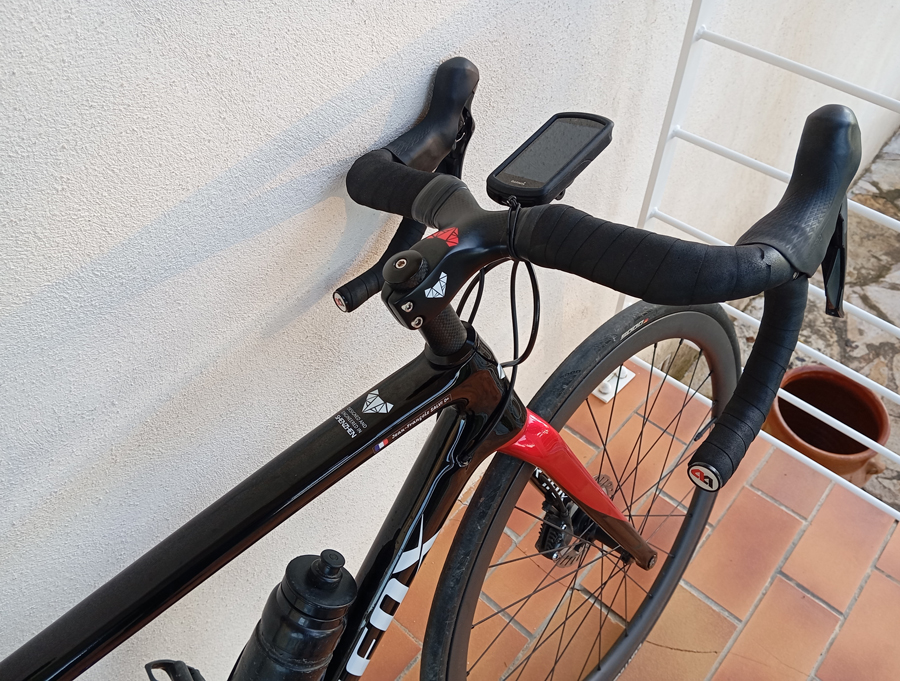
Shock absorption handlebars like the Trifox DHB500 are a game-changer for cyclists who want to improve their ride quality, comfort, and control. By reducing vibrations, increasing comfort, and enhancing durability, these handlebars allow you to ride longer and with greater ease. Whether you're tackling rough roads or just looking for a more enjoyable commute, shock absorption handlebars can make a noticeable difference in your cycling experience.

When it comes to road biking, comfort and speed are two of the most sought-after qualities. Whether you're racing through city streets or embarking on long-distance rides, the way your bike absorbs vibrations from the road can have a significant impact on both your comfort and performance. Vibration-absorbing road bikes, particularly those made from advanced materials like carbon fiber, offer a unique advantage in this area. But how exactly do they enhance your ride? Let's break it down, focusing on bikes like the Trifox Carbon Fiber Road Bicycle Ultra Light SF-QR-20.
1. Reducing Fatigue for Longer Rides
One of the most noticeable benefits of a vibration-absorbing road bike is reduced fatigue. When riding on rough or uneven surfaces, the constant vibrations travel through the bike frame and into your body. Over time, these vibrations can lead to discomfort and muscle fatigue, especially on longer rides. This is particularly true for cyclists who ride for extended hours or on roads that aren't perfectly smooth.
The Trifox Carbon Fiber Road Bicycle Ultra Light SF-QR-20 is equipped with a carbon fiber frame that naturally absorbs and dampens road vibrations. Carbon fiber has a unique ability to flex and absorb shock, which helps to reduce the impact forces transmitted to the rider. This results in less strain on your arms, legs, and back, allowing you to ride for longer periods without feeling worn out. Whether you’re training for a race or enjoying a leisurely ride, a vibration-absorbing bike keeps you comfortable, allowing you to push further without the nagging aches that can derail your ride.
2. Enhanced Comfort on Rough Roads
While many road cyclists dream of smooth, pristine pavement, the reality is that most of us will encounter rough patches, cracks, and uneven road surfaces. A traditional road bike without vibration-damping technology might transfer these bumps directly to your body, resulting in a jolting ride that can quickly become uncomfortable.
The Trifox SF-QR-20 addresses this issue with its carbon fiber construction, designed specifically to reduce vibrations without sacrificing stiffness or performance. The material’s natural ability to absorb shocks means that even when you’re riding on less-than-ideal surfaces, you’ll experience a smoother, more enjoyable ride. This level of comfort allows cyclists to focus on their technique and performance rather than being distracted by discomfort, making the bike ideal for those who ride on a variety of road conditions.
3. Improved Handling and Control
A bike that absorbs road vibrations doesn’t just provide comfort—it also improves handling and control. Vibrations from the road can cause your hands and arms to feel fatigued, which reduces your ability to hold the handlebars with a steady grip. This can be especially problematic during high-speed descents or sharp turns, where precise handling is essential.
With a vibration-absorbing road bike like the Trifox Carbon Fiber Road Bicycle, the reduced vibrations lead to better control of the bike. The smoother ride allows for a firmer grip on the handlebars, improving your ability to maintain stability, even in challenging conditions. Whether you’re maneuvering through a tight corner or descending at high speed, the bike’s ability to reduce vibrations keeps you connected to the road, giving you more confidence and control.
4. Increased Speed with Less Effort
While comfort and control are crucial, speed is the ultimate goal for many road cyclists. A smoother ride means you can exert less energy fighting the effects of road vibrations, allowing you to conserve more strength for pedaling and acceleration. The result? More efficient riding and the ability to maintain a faster pace with less effort.
Carbon fiber frames, like those on the Trifox SF-QR-20, are not only lightweight but also designed to flex in a way that maximizes energy transfer. This means that the bike absorbs shocks without wasting energy, allowing you to ride faster and with less strain. By reducing fatigue and increasing comfort, vibration-absorbing bikes make it easier to push your limits, whether you're racing or enjoying a fast-paced ride on your local roads.
5. Long-Term Health Benefits
Consistent exposure to high-impact vibrations can also lead to long-term physical issues, particularly for cyclists who ride frequently. Repeated shocks to the body can cause discomfort in the joints, wrists, and spine, potentially leading to injuries over time. Vibration-absorbing bikes, such as the Trifox Carbon Fiber Road Bicycle Ultra Light SF-QR-20, are designed to minimize these impacts, providing long-term health benefits. By reducing the strain on your body, these bikes help prevent injury and ensure that you can continue riding for years to come.
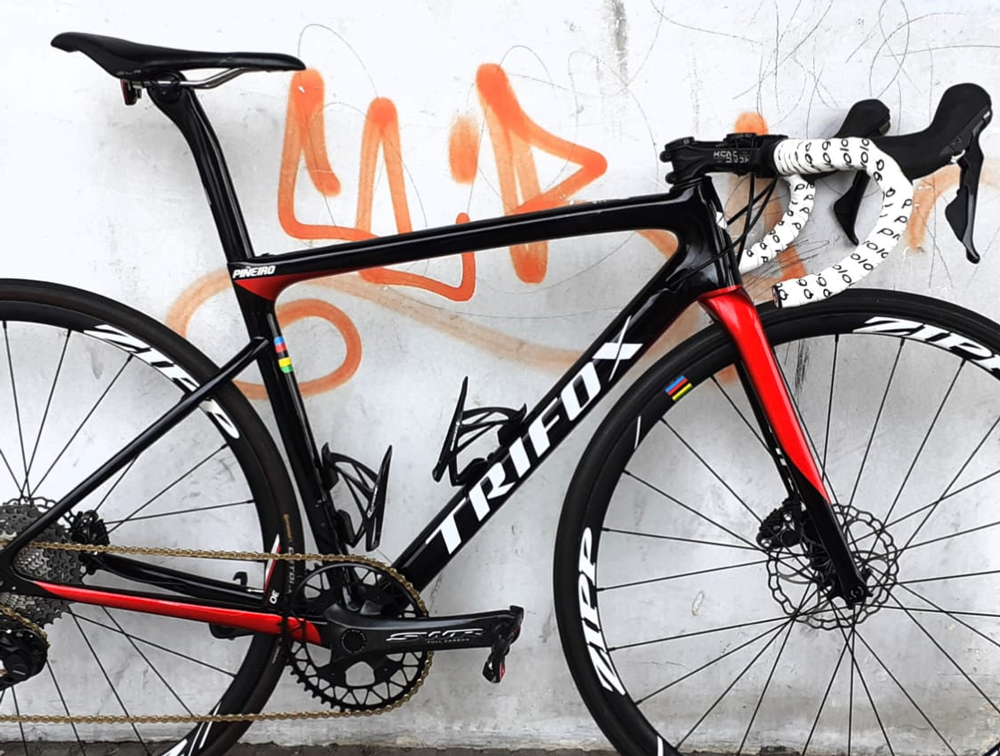
Conclusion
A vibration-absorbing road bike like the Trifox Carbon Fiber Road Bicycle Ultra Light SF-QR-20 offers significant advantages in terms of both comfort and performance. By reducing road vibrations, these bikes allow cyclists to ride longer with less fatigue, improve their control and handling, and maintain a faster pace with greater efficiency.
Whether you're a competitive racer or a casual rider, the enhanced comfort provided by a vibration-absorbing bike will help you enjoy your rides more and push your limits with greater ease. For cyclists looking to maximize both comfort and speed, investing in a bike with vibration-damping technology is a smart choice that will make every ride smoother, faster, and more enjoyable.
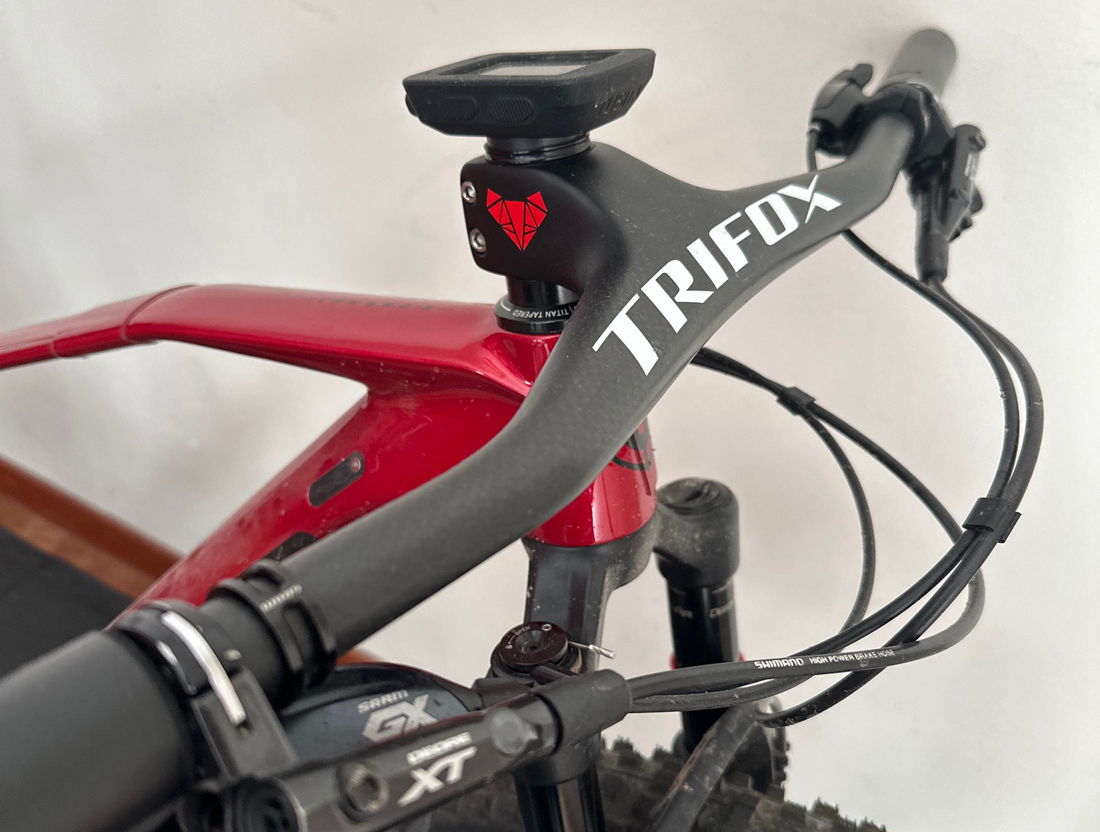
Mountain biking is all about performance, and every aspect of your bike can make a difference—whether it’s your tire choice, frame design, or the handlebars that you use. Aerodynamic handlebars, such as those found in cutting-edge MTB designs, are an often overlooked but powerful component in optimizing your ride. But how exactly can these handlebars improve your MTB performance? Let’s explore the benefits.
1. Reduced Air Resistance for Faster Rides
Aerodynamic handlebars are designed to minimize drag, the resistance caused by air friction. On the trail, especially at higher speeds, every little bit of drag counts. By reducing wind resistance, aerodynamic handlebars allow riders to conserve energy and maintain higher speeds with less effort. This is particularly beneficial on flat sections of the trail or during fast descents, where maintaining speed is crucial. A sleek, integrated design reduces the surface area exposed to wind, helping you cut through the air more efficiently.
For example, the **Trifox Carbon Integrated Handlebar RHB200**, made of high-quality carbon fiber, not only reduces drag but also integrates the stem and handlebar into a single unit. This creates a seamless design that eliminates the gaps and bulges typically found in traditional setups, further improving aerodynamics.
2. Improved Handling and Stability
Aerodynamic handlebars aren’t just about reducing air resistance—they also contribute to better handling and stability, which is vital for off-road riding. Many modern aerodynamic handlebars have a more ergonomic shape, offering a better grip and more control over the bike, especially when navigating rough terrain. The streamlined design also reduces weight, making the bike feel more responsive and agile.
The Trifox RHB200 features a compact, lightweight design that enhances control while riding through technical sections. Less weight means less inertia, allowing you to respond quicker to changes in terrain or obstacles, improving overall stability and comfort on the trail.
3. Enhanced Comfort on Long Rides
Long-distance riders know how much comfort matters. Aerodynamic handlebars like the **Trifox Carbon Integrated Handlebar RHB200** are designed to reduce the strain on your arms and shoulders, which can be especially important during longer rides. The ergonomic shape of the handlebars allows for a more natural hand position, helping to reduce fatigue over time. The lighter weight of carbon fiber also means less effort to keep the bike steady, which is crucial when spending hours in the saddle.
For mountain bikers who are tackling challenging trails or going for endurance rides, comfort is key to maintaining performance. With aerodynamic handlebars, you can ride longer without feeling the aches and pains that come with subpar handlebars.
4.Increased Durability and Strength
Many high-end aerodynamic handlebars are made from carbon fiber, known for its combination of lightweight properties and high durability. Not only does this material contribute to a better aerodynamic profile, but it also enhances the strength and longevity of the handlebars. For mountain bikers who push their bikes to the limit on rugged trails, durability is a must.
The Trifox RHB200 is a prime example of how advanced materials and engineering can create a handlebar that is both aerodynamic and highly durable. The carbon construction can withstand rough handling and impacts, ensuring that the handlebars maintain their integrity throughout countless rides.
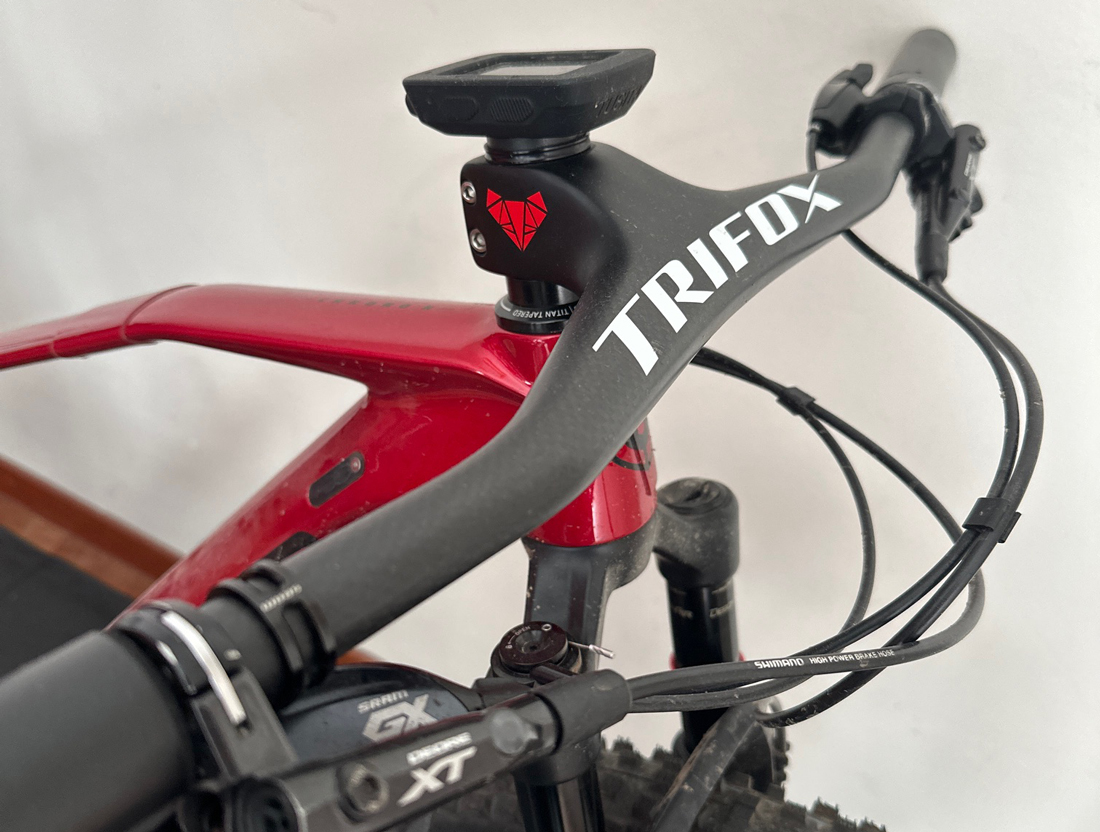
Conclusion
Aerodynamic handlebars, such as the Trifox Carbon Integrated Handlebar RHB200, offer more than just a sleek look. They can significantly improve your MTB performance by reducing air resistance, improving handling and stability, enhancing comfort, and providing long-lasting durability. Whether you're chasing speed on flat stretches or navigating technical terrain, these handlebars offer the edge you need to enhance your riding experience. For serious mountain bikers looking to optimize their setup, switching to aerodynamic handlebars is an investment that can pay off in spades.
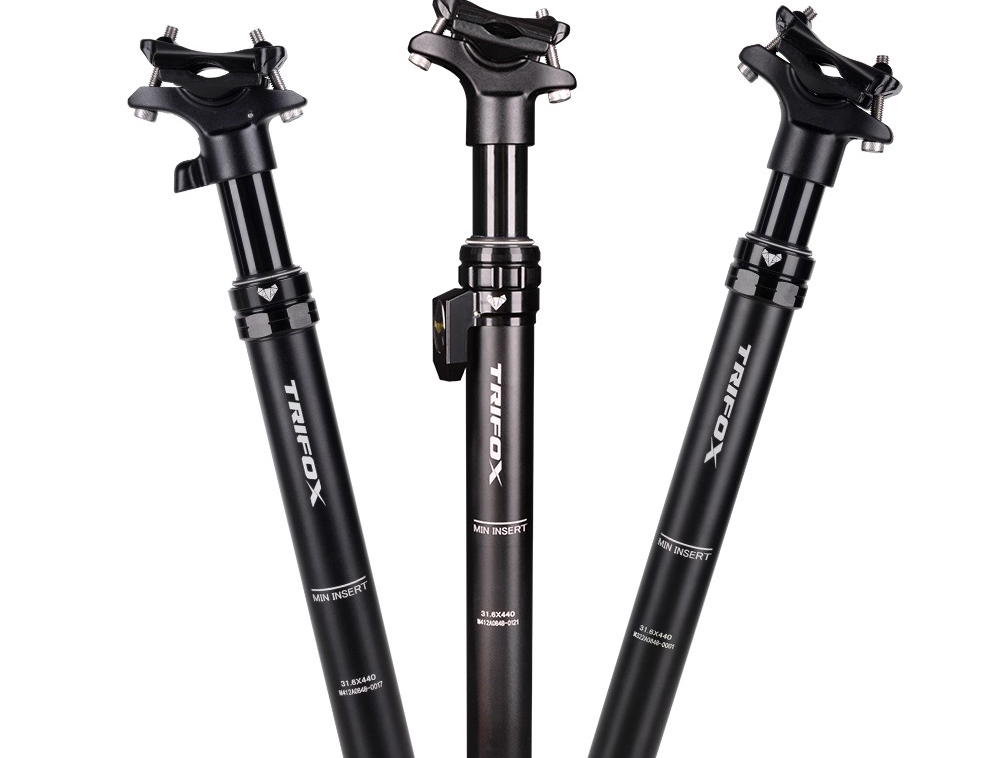
Cycling is not only a fun and efficient way to get around, but it's also a fantastic workout. Whether you're a commuter, a weekend rider, or a seasoned athlete, having the right accessories can significantly improve your comfort, control, and overall cycling experience. Here’s a rundown of essential bicycle accessories every cyclist should consider for better comfort and control on the road or trail.
1. Cycling Gloves
Cycling gloves are a must-have for comfort and control. They provide grip, which is crucial for handling the handlebars securely, especially during longer rides or in challenging weather conditions. Gloves with padding also help to reduce pressure on your palms, minimizing numbness and discomfort during long rides. Additionally, many cycling gloves feature moisture-wicking fabric to keep your hands dry, and some models even offer touchscreen-compatible fingertips so you can use your phone without removing them.
2. Saddle and Seat Cushion
The saddle is one of the most important components of a bicycle when it comes to comfort. An uncomfortable seat can quickly turn a pleasant ride into an agonizing experience. Consider upgrading to a saddle that fits your body type and riding style. If you're a commuter or a recreational rider, a more cushioned seat might be the way to go. For those tackling longer rides or more intense cycling, a performance-oriented saddle with a cut-out for pressure relief may provide the best balance of comfort and support.
Adding a seat cushion or padding is another great option, especially for riders who need a bit more comfort without sacrificing performance. Many cycling-specific seat cushions are designed to provide extra padding while remaining lightweight and breathable.
3. Pedals and Cleats
Pedals and cleats are critical for efficient power transfer and control. Upgrading to clipless pedals (those that attach to cleats on your shoes) can improve your pedaling efficiency by allowing you to both push down and pull up on the pedals. This can make a significant difference, especially during longer rides or when climbing hills.
If clipless pedals aren't your style, ergonomic platform pedals can also provide a more comfortable and controlled ride. These often feature larger surfaces, better grip, and sometimes additional cushioning to reduce pressure on the feet.
4. Handlebar Tape or Grips
Handlebar tape or grips are essential for ensuring a comfortable and controlled ride. For road cyclists, a padded handlebar tape can provide a better grip and reduce vibrations from the road, which can lessen fatigue during long rides. On the other hand, mountain bikers or casual cyclists might opt for ergonomic grips, which help reduce hand strain and provide extra control when navigating rough terrain. Both options are available in various materials, such as cork, foam, or gel, which cater to different preferences for comfort and grip.
5. Water Bottle and Cage
Staying hydrated during a ride is crucial, and a good water bottle and cage are essential accessories to ensure you can easily access water while cycling. A bottle with an ergonomic design can fit comfortably in your hand and be easy to drink from, while a quality cage keeps your bottle secure but easy to remove when needed. Consider looking for lightweight, durable options that won't add unnecessary weight to your bike.
6. Lights and Reflectors
Safety is key when cycling, particularly when riding in low-light conditions or at night. A front light illuminates your path, while a rear light increases your visibility to others, especially in traffic. Additionally, adding reflectors to your bike and clothing can improve your visibility to drivers and other cyclists. Many modern bike lights come with rechargeable batteries and are designed to be compact and lightweight, making them easy to attach and remove.
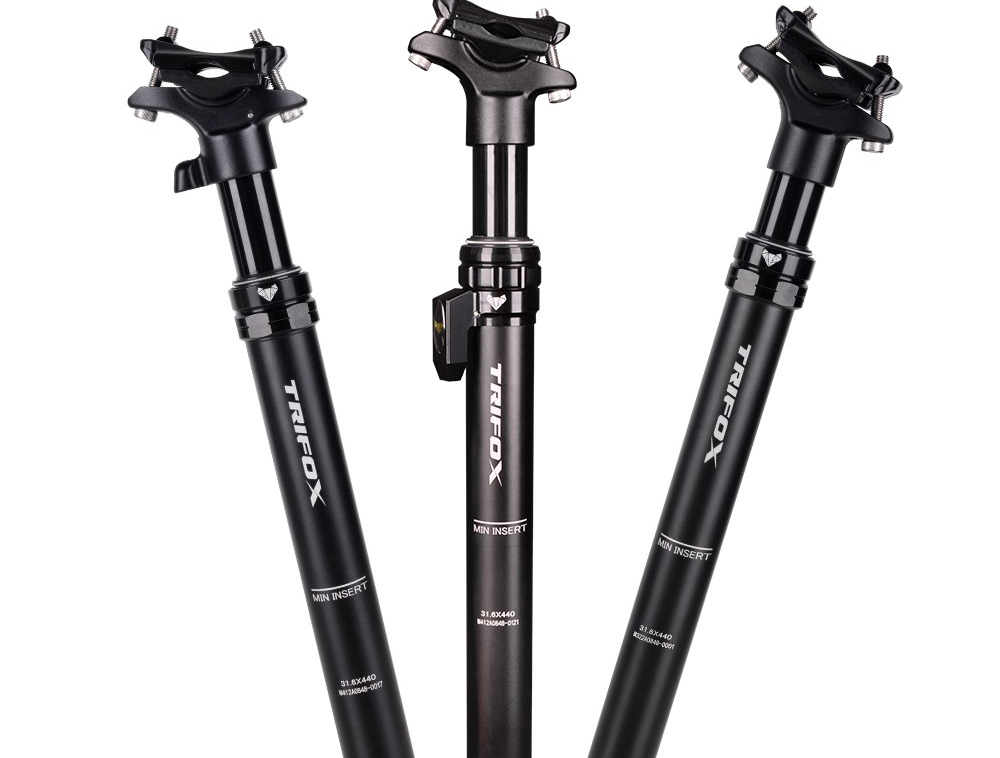
Conclusion
While cycling can be a simple and enjoyable activity, the right accessories can make a significant difference in both comfort and control. From padded gloves and ergonomic saddles to efficient pedals and safety lights, investing in quality bike accessories not only enhances your experience but also helps protect your body and improve your performance. Whether you're just starting out or you're a seasoned rider, these essentials will help make every ride more enjoyable and safer.
For more information on high-quality cycling accessories, check out the wide selection of Trifox Bike bicycle accessories, where comfort and performance meet innovation.
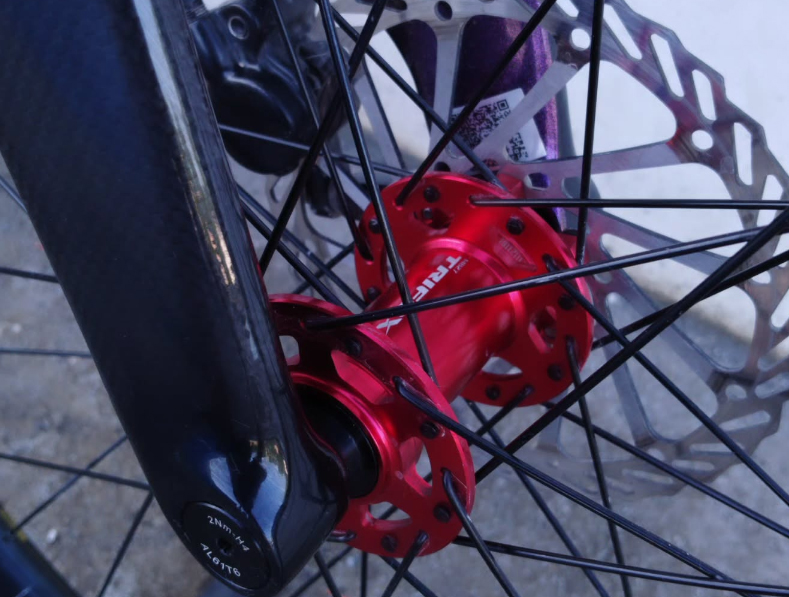
When it comes to cycling, the performance of your bike isn’t just determined by your frame or gears. The wheels play a pivotal role, and within the wheels, the wheel hubs and associated parts are often the unsung heroes of your ride. Wheel hubs are crucial to your bike’s overall performance, affecting everything from speed to handling, efficiency, and comfort.
1. Efficient Power Transfer with Quality Hubs
Wheel hubs are at the heart of your bike’s wheel system, and they play a significant role in how power is transferred from your pedals to the ground. When you pedal, the energy you generate is transmitted through the drivetrain and into the wheel hubs. A high-quality hub can efficiently transfer this energy with minimal loss, making your efforts more effective. This efficiency is essential for long rides, competitive cycling, and hilly terrain where every bit of energy counts.
For example, hubs with a higher engagement rate—meaning the number of points where the pawls inside the hub engage—provide a quicker response to your pedaling. This is particularly advantageous when you’re climbing hills or sprinting, as it allows you to accelerate faster and transfer more of your power to the road without losing momentum.
2. Smoothness and Low Friction for Better Performance
Another key factor in how hubs affect cycling performance is their smoothness and level of friction. High-quality hubs are designed to reduce friction to a minimum, ensuring that your wheels spin freely with less effort. Hubs with high-quality bearings—often ceramic or sealed ball bearings—are more efficient at reducing friction compared to low-quality bearings. This means less energy is wasted during your ride, making it easier to maintain speed, especially during long-distance rides or on flat sections of road.
Smooth-running hubs are also less prone to wear and tear, which can result in improved longevity and lower maintenance costs over time. Hubs that are built with durability in mind can handle the rigors of various terrains without compromising performance.
3. Weight Considerations for Better Handling
Wheel hubs also impact the overall weight of your bike. Lighter hubs can contribute to a faster and more responsive ride, particularly for riders who participate in competitive cycling or racing. A lightweight hub allows your bike to accelerate more quickly, especially when transitioning between gears or during a sprint. On the other hand, heavier hubs can slow you down, particularly when climbing hills or navigating tight corners.
However, it's important to balance weight with durability and strength. For instance, carbon hubs may be lighter but could be less durable on rougher terrains compared to more robust aluminum hubs. Choosing the right hub for your needs and riding conditions is essential to ensure that you don't sacrifice performance for weight savings alone.
4. Improved Braking Performance with the Right Hubs
The interaction between your hubs and brake components can significantly impact your overall braking performance. For cyclists who use rim brakes, the quality of the wheel hubs can affect how evenly and effectively your braking surfaces work. Poor-quality hubs can lead to uneven braking, while high-quality hubs ensure that the wheels are aligned correctly for smooth and consistent braking power.
For disc brake-equipped bikes, the hub's compatibility with the rotor and the ability to withstand heat buildup is equally important. A quality hub helps maintain the structural integrity of the disc brake system, reducing the risk of warping or overheating, which can compromise braking efficiency and safety.
5. Durability for Longevity
When it comes to cycling, durability is key—especially if you ride regularly or tackle rough terrain. The right hubs, built with high-quality materials and precision engineering, offer improved longevity. Hubs made from durable materials like aluminum or steel tend to be more resilient to impacts, moisture, and dirt. This is particularly crucial for off-road cyclists or mountain bikers who face harsh conditions that can wear out components faster.
Additionally, hubs with sealed bearings or internal grease systems are better at keeping out dirt and water, ensuring the hubs maintain their smoothness and performance over time. This means less maintenance and fewer repairs, allowing you to focus more on your ride and less on frequent bike tune-ups.
6. Customization for Specific Cycling Needs
One of the most attractive features of modern wheel hubs is the variety of options available for different types of cycling. Whether you're a road cyclist, mountain biker, or triathlete, there are hubs specifically designed to meet the needs of your riding style. Road cyclists may opt for lightweight hubs with quick engagement for improved acceleration, while mountain bikers might prioritize durability and the ability to handle rough terrain.
Hubs also come in different axle types and configurations, allowing you to customize your bike to fit your riding style. For instance, through-axle hubs offer increased stability and strength, particularly for off-road cycling, while quick-release hubs provide convenience for road cyclists who need to make frequent tire changes.
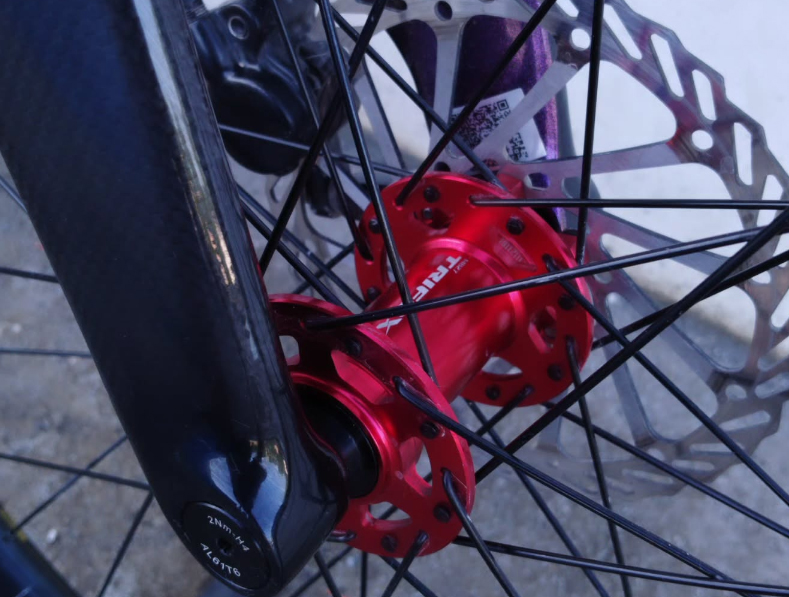
Wheel hubs and their associated parts are crucial to your bike’s overall performance. From improving power transfer and reducing friction to enhancing comfort and longevity, the right hubs can make a noticeable difference in your cycling experience.
Investing in quality wheel hubs ensures that your bike runs more efficiently, lasts longer, and delivers a smoother ride—whether you're on the road, trail, or competing in races. By understanding how wheel hubs influence your performance, you can make better choices when upgrading your bike, ensuring a more enjoyable and efficient ride every time.
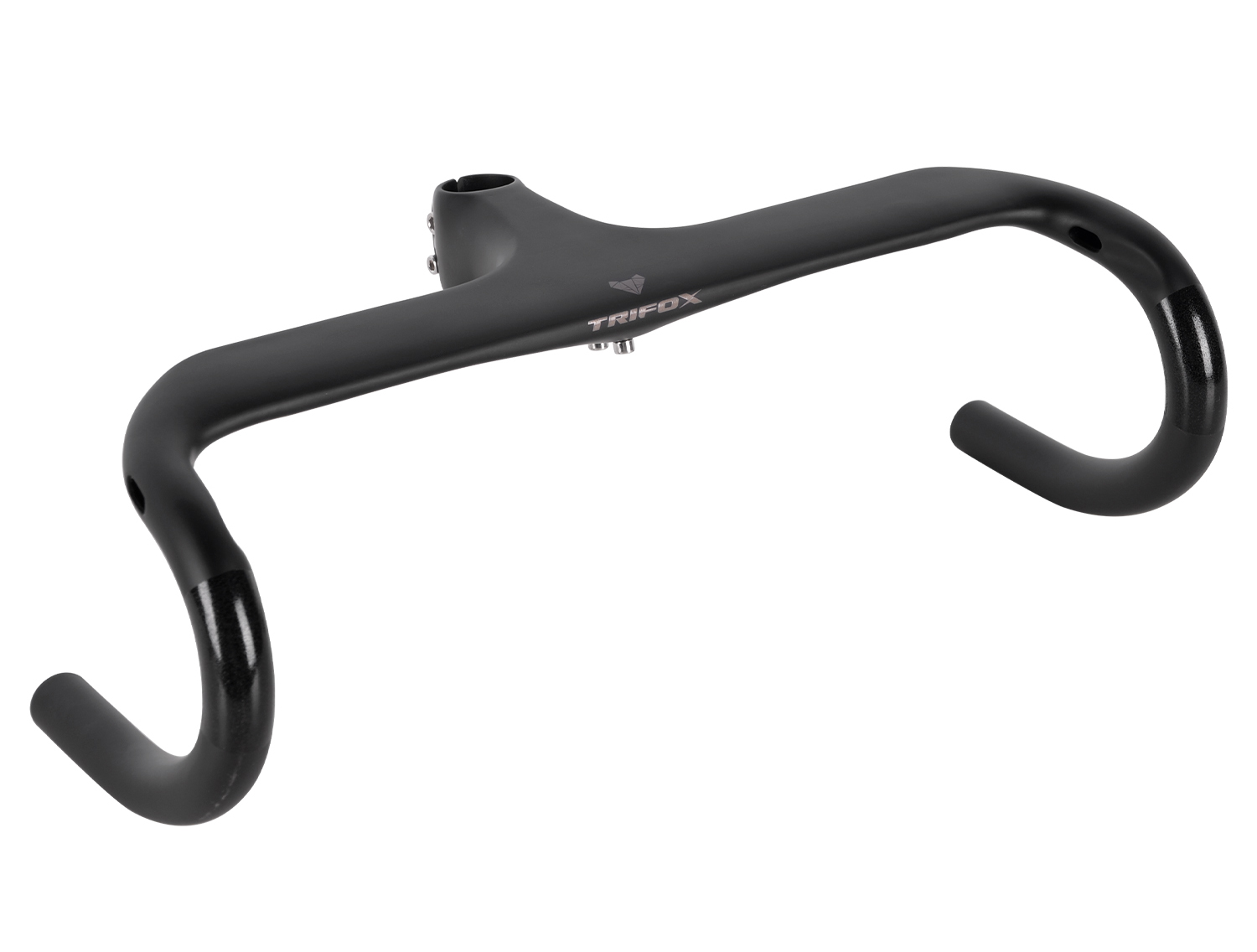
For many cyclists, the handlebars are a crucial component that can significantly affect comfort, control, and performance. When it comes to upgrading your bike, one of the best investments you can make is switching to carbon drop bars. While traditional aluminum bars have been the standard for years, carbon drop bars have quickly gained popularity for their impressive benefits.
Whether you're a seasoned road cyclist or a weekend rider looking for an upgrade, carbon drop bars can provide advantages that are hard to ignore. Here’s why you should consider making the switch.
1. Lightweight Design for Enhanced Performance
One of the primary reasons to switch to carbon drop bars is their lightweight nature. Carbon fiber is known for being incredibly strong yet light, which means you can reduce the overall weight of your bike without compromising on durability. In cycling, every gram counts, especially when you’re climbing hills, sprinting, or racing. By switching to carbon drop bars, you’ll enjoy quicker acceleration and improved maneuverability.
For road cyclists, the weight reduction can make a significant difference in long-distance rides or during climbs, where even a small decrease in bike weight can lead to better performance. Carbon drop bars are ideal for those looking to maximize every ounce of effort and push their limits on the road.
2. Increased Comfort with Vibration Damping
One of the standout features of carbon drop bars is their ability to dampen vibrations. On long rides, especially on rough or uneven roads, the constant vibrations from the handlebars can lead to fatigue, discomfort, and even numbness in your hands. Carbon fiber, by its nature, absorbs road vibrations much better than aluminum or steel.
By reducing the vibrations transmitted through the handlebars, carbon drop bars allow you to ride longer without experiencing discomfort. This is particularly beneficial for cyclists who enjoy endurance rides or those who spend a lot of time on mixed surfaces. With carbon drop bars, you’ll feel less strain on your wrists and shoulders, enabling you to maintain a more comfortable riding position for extended periods.
3. Improved Stiffness and Control
While carbon drop bars are lightweight, they don’t sacrifice stiffness. In fact, they offer superior stiffness compared to aluminum bars. This stiffness translates to improved power transfer when you’re riding hard or sprinting. When you apply pressure to the handlebars, a stiffer bar ensures that the energy you generate is transferred directly to the wheels rather than being absorbed by flexing in the handlebars. This leads to a more responsive and efficient ride.
Additionally, the improved stiffness of carbon bars offers better control, especially during high-speed descents or in technical corners. The enhanced feedback from the road makes it easier to maintain stability and handle your bike with precision.
4. Aerodynamic Advantage
Another reason to consider carbon drop bars is their aerodynamic design. Carbon fiber allows for more intricate shaping, making it possible to create handlebars that reduce wind resistance. Many carbon drop bars are designed with an aerodynamic profile, which can help you maintain higher speeds with less effort. This is particularly useful for time trials, road racing, or cyclists looking to maximize their performance on fast, flat sections of a ride.
In addition to their aerodynamic shape, carbon drop bars often come with a variety of ergonomic features that enhance comfort and performance, such as ergonomic bends and positions that reduce strain on your wrists and arms.
5. Durability and Longevity
Carbon drop bars are incredibly durable and resistant to corrosion, making them an excellent long-term investment for your bike. Unlike metal handlebars, which may corrode over time, carbon bars can withstand the elements much better, especially in wet or humid conditions. Carbon’s ability to handle repeated impacts and resist wear and tear ensures that your drop bars will last much longer than aluminum bars.
Moreover, carbon fiber is less prone to bending or cracking under stress compared to aluminum, which means you can ride with confidence, knowing your handlebars will hold up in tough conditions. This durability, combined with the lightweight and comfort benefits, makes carbon drop bars a wise choice for any serious cyclist.
6. Customization and Versatility
Carbon drop bars are available in a variety of shapes, sizes, and designs to suit different types of cycling. Whether you're a road cyclist, gravel rider, or a cyclist who participates in triathlons, there’s a carbon bar designed specifically for your needs. Many carbon bars feature ergonomic shapes and different hand positions that improve comfort and reduce fatigue, making them suitable for long-distance rides and races.
Additionally, carbon bars often offer greater flexibility in terms of setup, with some models allowing you to adjust the width, drop, and reach of the handlebars to achieve the perfect fit. This customization ensures that you’re riding in a position that enhances both comfort and performance.
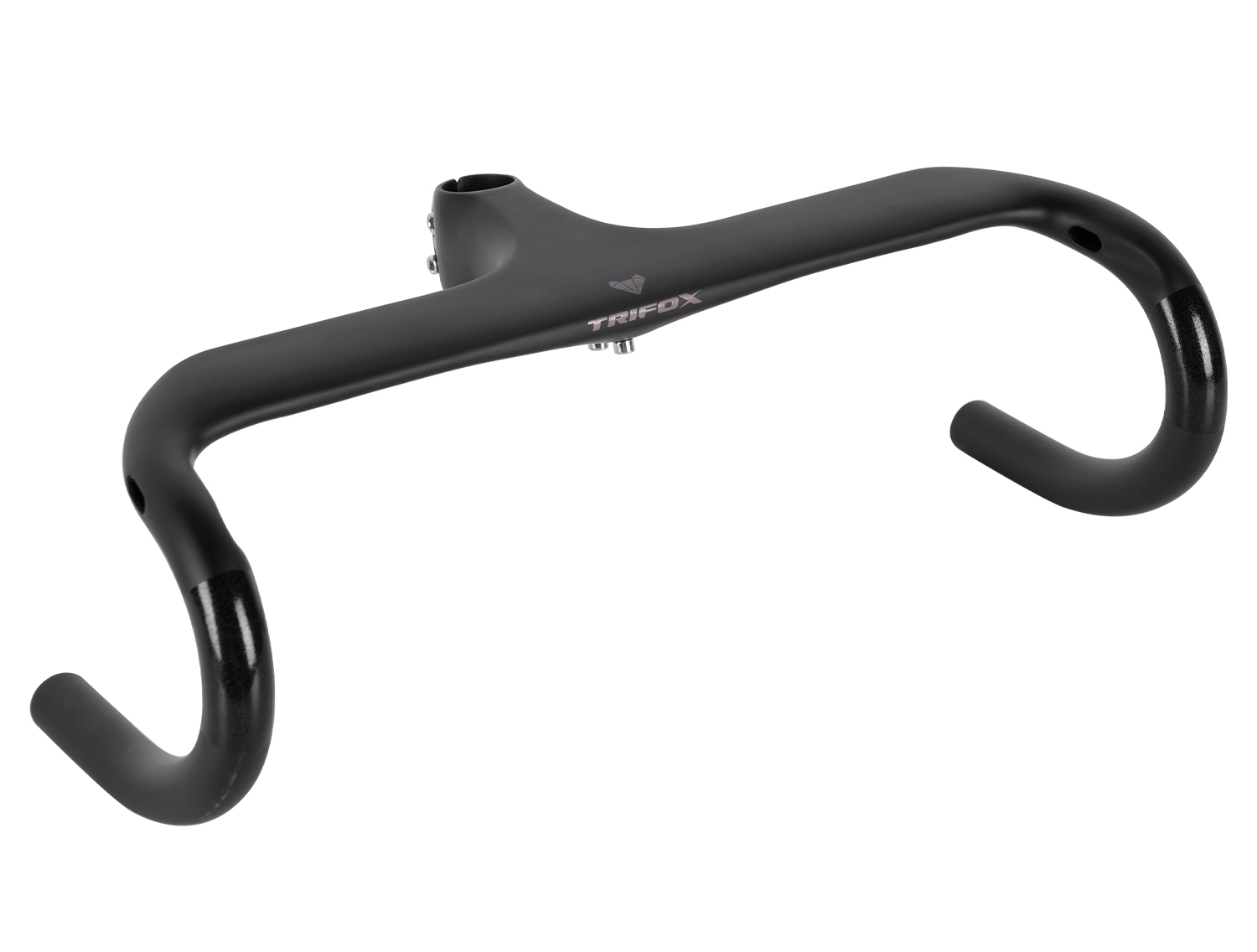
Switching to carbon drop bars is a game-changer for cyclists looking to improve their ride. The combination of lightweight design, enhanced comfort through vibration damping, increased stiffness for better power transfer, and the added aerodynamic advantages makes carbon drop bars a must-have for serious cyclists. Whether you're racing, touring, or simply riding for pleasure, upgrading to carbon drop bars can help elevate your performance and riding experience.
If you're ready to take your cycling to the next level, consider making the switch to carbon drop bars. Not only will you notice the difference in comfort and control, but you’ll also be investing in a long-lasting, high-performance upgrade that will enhance your cycling for years to come.
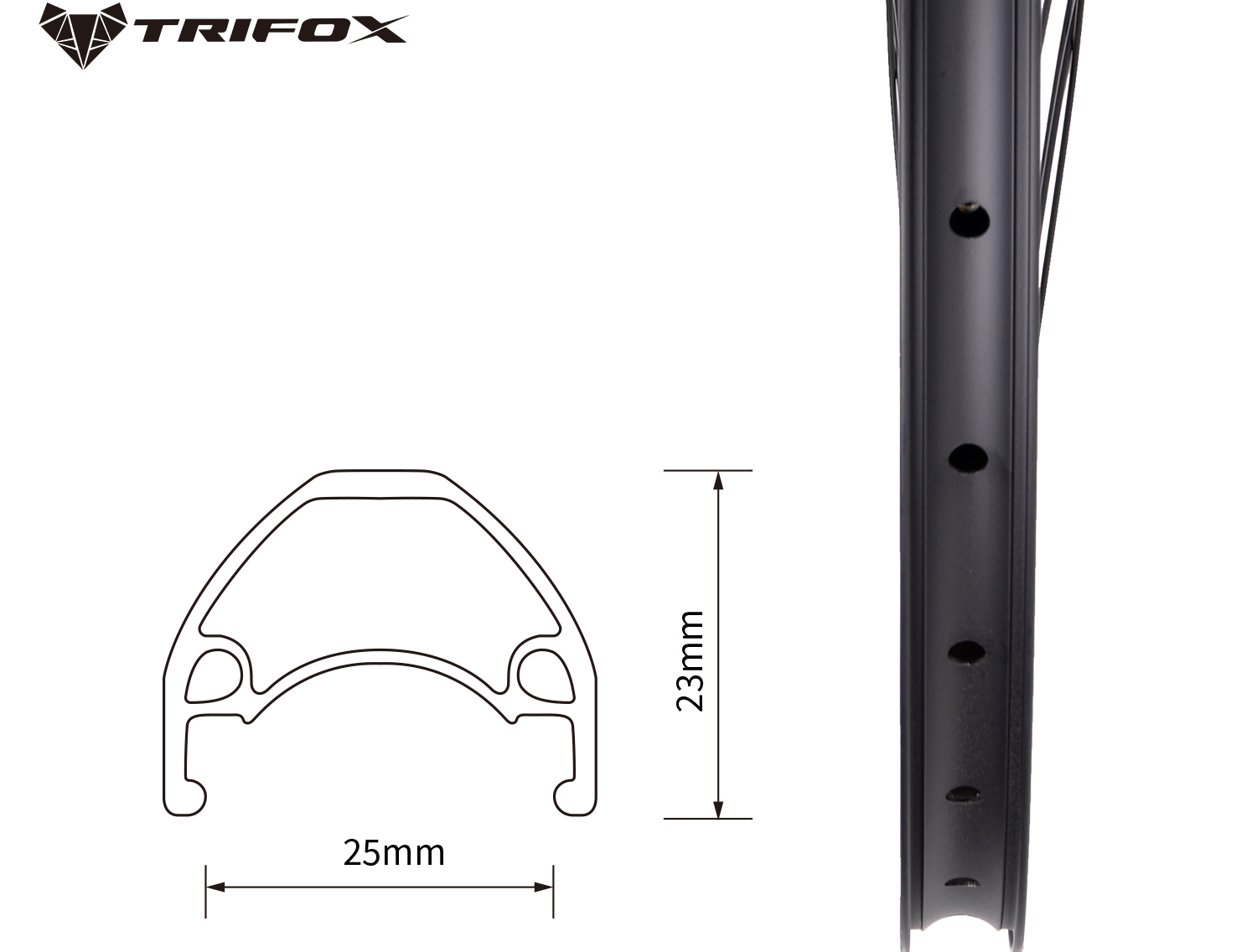
When it comes to upgrading your bicycle, few components make as significant an impact as your wheels. Among the most popular options, alloy series wheels have become a go-to choice for cyclists seeking a balance of performance, durability, and value. Whether you're an amateur rider, a seasoned racer, or someone who enjoys long rides on varied terrains, alloy wheels can elevate your cycling experience.
1. Durability and Strength
One of the main reasons cyclists opt for alloy wheels is their impressive durability. Alloy wheels are made from a blend of metals such as aluminum, which is known for its strength-to-weight ratio. These wheels are designed to withstand the wear and tear of regular riding, from the bumps of rough terrain to the pressure of high-speed rides. Compared to traditional steel wheels, alloy wheels are significantly lighter and more resistant to corrosion, meaning they'll last longer and maintain their integrity even in harsh conditions.
Whether you’re riding on rugged mountain trails or navigating urban streets, alloy wheels provide the strength you need without adding excessive weight to your bike. This durability makes them ideal for riders who want reliable performance without constantly worrying about replacing or repairing their wheels.
2. Lightweight for Better Performance
Weight is a critical factor when it comes to cycling performance. Alloy wheels are lighter than their steel counterparts, which translates into a better ride quality. When your wheels weigh less, it takes less energy to accelerate and maintain speed, improving your overall efficiency. This is particularly noticeable in competitive cycling, where every ounce counts. The reduced weight also enhances maneuverability, allowing you to navigate corners and obstacles with ease.
Cyclists who participate in road cycling, mountain biking, or triathlons can greatly benefit from alloy wheels’ lightweight properties. They help improve both speed and handling, contributing to a smoother and faster ride.
3. Affordability Without Sacrificing Quality
Another major benefit of alloy series wheels is the affordability they offer. While high-end carbon fiber wheels can provide excellent performance, they often come with a hefty price tag. Alloy wheels, on the other hand, deliver comparable benefits in terms of strength, durability, and performance at a much more reasonable price.
For recreational cyclists or those just getting started in the sport, alloy wheels offer an accessible yet high-performance option. They provide exceptional value for the money, allowing cyclists to enjoy a significant upgrade to their bike without breaking the bank.
4. Versatility for Various Riding Conditions
Alloy wheels are versatile and suitable for a wide range of cycling disciplines. From mountain biking to road cycling, alloy wheels can be customized to suit your needs. Whether you're tackling rough terrain with a fat-tire mountain bike or cruising on a lightweight road bike, alloy wheels are designed to handle it all.
Manufacturers like Trifox offer alloy wheels that are tailored to specific types of riding, ensuring that you get the best performance for your style. For instance, you can find alloy wheels designed for aerodynamics, as well as models made for shock absorption in off-road conditions. This versatility makes alloy wheels an attractive option for cyclists who enjoy exploring different types of riding.
5. Improved Braking Performance
Alloy wheels are also known for their ability to improve braking performance, especially when paired with quality brake pads. Their strong structure and smooth surface make it easier for the pads to grip, leading to more responsive and effective braking. This is an important factor for cyclists who ride at high speeds or in challenging conditions, where precise braking can be the difference between safety and danger.
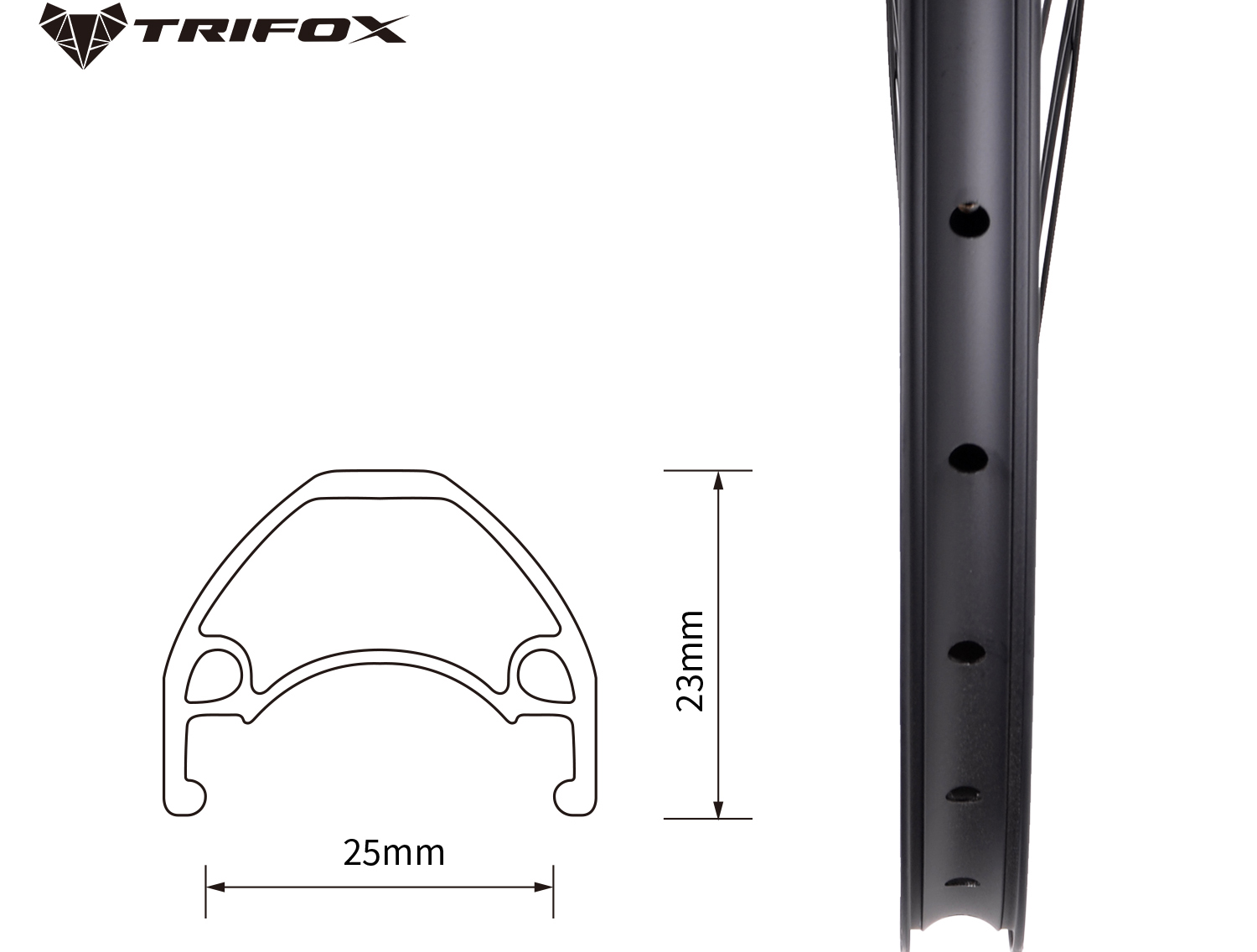
In summary, alloy series wheels offer a combination of durability, performance, lightweight design, and affordability that makes them a fantastic choice for cyclists of all levels. Whether you're looking for an upgrade to your current ride or building a new bike from scratch, alloy wheels are a reliable and cost-effective solution that enhances your cycling experience. So, if you're considering a new set of wheels for your bike, alloy wheels might just be the perfect fit.

























































